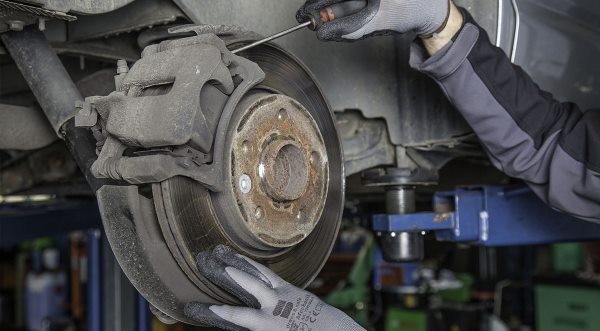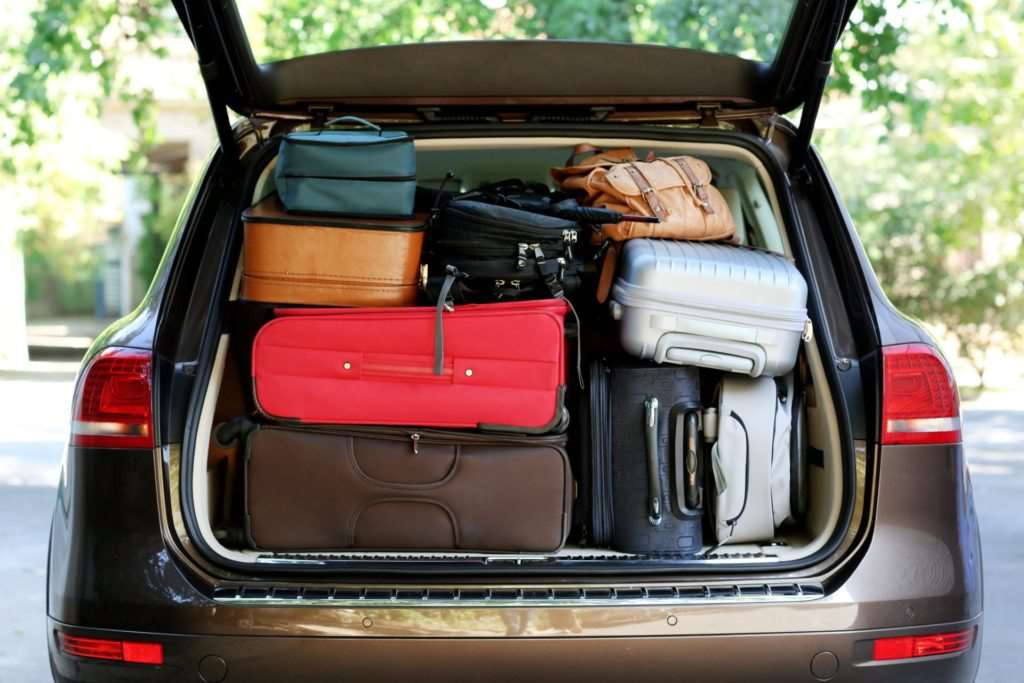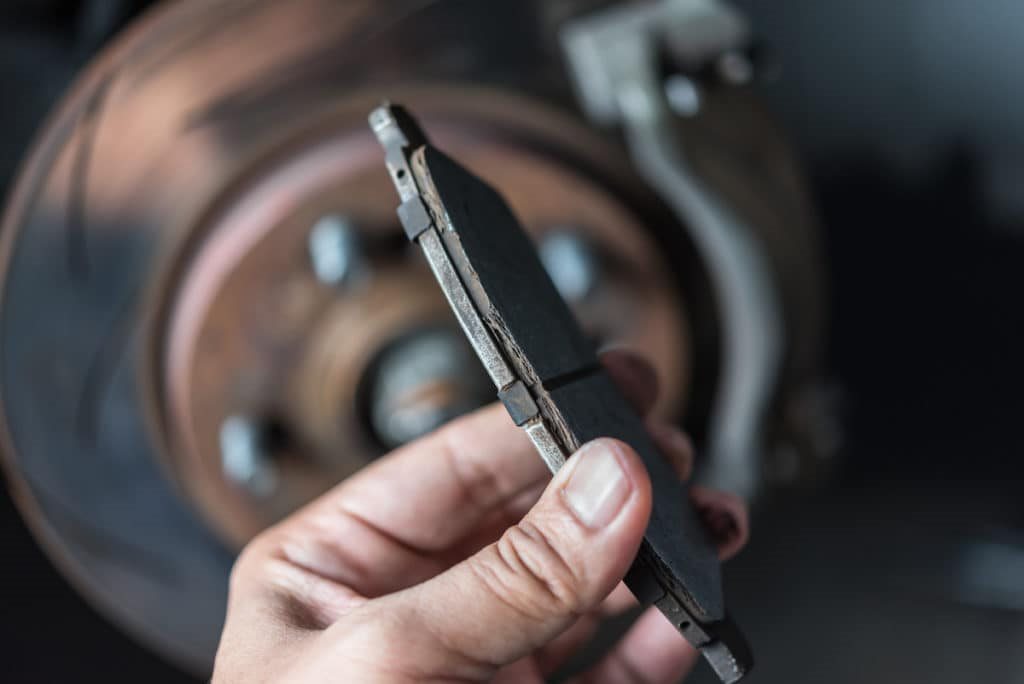Have you ever noticed that your car’s brake pads tend to wear out within a remarkably short period of three months or less? If you have, you’re not alone! You’ve come to the right place for the brake pads worn out in 3 months issue!
Brake pads are positioned between the rotor and the caliper, performing a vital role in the process of slowing down or halting your vehicle.
They are the crucial component responsible for making contact with the brake rotors and applying the necessary pressure to facilitate your car’s deceleration or complete stop.
Due to the constant pressure that brake pads endure during their operation, they naturally experience wear and tear over time, necessitating eventual replacement.
Let’s delve into the reasons behind the wear of brake pads, leading to their replacement in as little as three months or less.
Contents
What Causes Brake Pads Worn Out In 3 Months Or Less?
The accelerated wear and tear of your car’s brake pads in the initial months primarily stem from heightened friction.
It’s crucial to understand that the core purpose of brake pads is to decelerate your vehicle. They accomplish this task by exerting pressure on the rotor, which is directly linked to the wheel.
The reason for their swift deterioration lies in the incessant friction they experience while making contact with the rotor’s surface.
Factors Influencing Brake Pad Lifespan
Numerous factors contribute to the rate at which your brake pads wear down. We will explore these common factors that influence the longevity of your brake pads.
Your Driving Style
One of the most significant determinants of how rapidly your brake pads wear down is your driving style. Consider this: individuals who habitually drive at high speeds tend to replace their brake pads more frequently than those who adopt a smoother driving approach.

Driving at elevated speeds places heightened demands on the brake pads due to the increased friction generated during braking maneuvers. When you’re driving at high velocities, your vehicle necessitates substantial stopping power, placing significant stress on the brake pads.
Conversely, drivers who adopt a more sedate and controlled driving style exert less strain on their brake pads, consequently extending their lifespan.
The Type and Quality of Brake Pads
Another pivotal factor influencing the possibility of your brake pads worn out in 3 months is the specific type you have installed on your vehicle. Brake pads come in a variety of materials, including ceramic, carbon fiber, semi-metallic, and organic compositions.
Not all brake pads offer the same level of longevity. For example, when all other factors remain constant, ceramic brake pads tend to outlast their semi-metallic counterparts.
In essence, the type and quality of the brake pads equipped on your vehicle play a substantial role in determining if your brake pads worn out in 1 month or more.
The Overall Condition of Calipers and Brake Rotors
The condition of your brake pads is closely tied to the state of other essential components, such as calipers and rotors. When these elements are not in good condition, it can lead to accelerated wear.
For example, if a brake caliper becomes stuck, it can cause the brake pad to wear out rapidly as it fails to disengage from the brake rotor.

Road Conditions
The rate at which your brake pads wear down is also influenced by the road conditions you encounter. If you regularly drive in rugged terrain, your car’s brake pads are likely to deteriorate more quickly compared to driving on flat, smoother roads.
Type of Transmission
The type of transmission plays a role in determining wheather your brake pads worn out in 3 months. In the case of a manual transmission, brake pads tend to have a longer lifespan compared to an automatic transmission.
Because manual transmissions have an additional means of slowing down the vehicle by shifting gears, putting less stress on the brake pads.
Your Car Usage Frequency
The frequency with which you use your car plays a substantial role in determining the longevity of your brake pads. In essence, how often you drive directly impacts how long your brake pads will endure before requiring replacement or maintenance.
Besides the above factors for brake pads worn out in 3 months, here are several mistakes to steer clear of to ensure your brake last longer in terms of maintenance.

Failure to Flush Brake Lines
One of the most critical aspects of brake system maintenance is flushing the brake lines. This process is essential to prevent the accumulation of air bubbles in the brake fluid, which can lead to premature mechanical wear.
It is advisable to have your mechanic flush the brake lines and replace the brake fluid approximately once every two years.
Failure to Use Lower Gears
Lower gears naturally slow down a vehicle. Utilizing lower gears to moderate your vehicle’s speed when descending without relying excessively on your brakes can help minimize wear, avoiding the brake pads worn out in 3 months issue.
This technique is applicable to both manual transmission vehicles and certain automatic transmission vehicles.
In manual vehicles, it’s recommended not to shift above third gear while descending. In automatic transmissions, you can achieve speed control by selecting lower gears, such as first or second gear, if available.
Many automatic transmission models offer these lower gear options alongside the standard drive mode, allowing drivers to downshift and reduce brake pad wear.
Excessive Weight
The greater the weight of your vehicle, the more momentum it carries while in motion, and subsequently, the more energy your brake system must exert to bring it to a halt. It’s advisable to refrain from driving with unnecessary weight in your vehicle.

Remove heavy, non-essential items from your vehicle when they are not required. Additionally, disconnect any trailers that you tow with your vehicle when they are not actively in use.
This practice not only enhances the efficiency of your braking system but also contributes to safer and more economical driving.
Do Brake Pads Deteriorate Over Time, Even When Not in Use?
Brake pads tend to deteriorate over time, even when they remain inactive. Brake pads are constructed from exceptionally durable materials designed to withstand the high levels of stress they encounter during braking.
However, the components used in brake pad manufacturing typically undergo an aging process. This can result in a gradual weakening of their structural integrity over time.
Consequently, the effectiveness of a brake pad today may not mirror its performance a decade later, even if it remains unused during that period.
FAQs on Brake Pads Wearing Out
-
What is the typical lifespan of brake pads?
The longevity of brake pads varies on several factors, including your driving habits, transmission type, total mileage driven, the specific type of brake pads installed, and more.
-
What is the expected mileage range for brake pad lifespan?
On average, brake pads are anticipated to endure anywhere from 25,000 to 65,000 miles before requiring replacement.
While pinpointing an exact figure is challenging, it is recommended to consider changing your brake pads around the 40,000-mile!
-
How can improper installation lead to premature brake pad wear?
Improper installation, including uneven pad placement or incorrect torquing of fasteners, can result in uneven pad wear. This can cause one pad to wear faster than the others, leading to the need for replacement sooner than expected.
Check out this video from ChrisFix to learn more about how to remove the old pads and rotors!
-
Are there any signs that indicate brake pads are wearing out too quickly?
Signs of premature brake pad wear include squeaking or squealing noises, reduced braking performance, longer stopping distances, and visual inspection of thin or unevenly worn pads.
If you notice these symptoms, it’s essential to have your brakes inspected promptly.
-
Can issues with the braking system itself contribute to fast brake pad wear?
Problems within the braking system can put excessive stress on the brake pads, causing them to wear out quickly. They can be malfunctioning calipers, worn rotors, or brake fluid leaks.
A thorough inspection of the entire braking system is necessary to identify and address these issues.
-
How can I extend the lifespan of my brake pads?
To prolong the life of your brake pads, practice smooth and gradual braking. Avoid unnecessary heavy braking, and maintain a safe following distance to reduce abrupt stops.
Additionally, choose high-quality brake pads and ensure proper installation and regular maintenance of the entire braking system.
-
Is it safe to continue driving with worn-out brake pads?
Driving with worn out brake pads is not safe. Worn-out pads can compromise braking performance, leading to longer stopping distances and increased risk of accidents.
If you suspect your brake pads are worn out, replace them promptly to ensure your safety on the road.
Final Words
Brake pads serve a vital role in the timely slowing down and stopping of your vehicle. Nonetheless, they are prone to rapid wear due to their high friction properties, necessitating regular replacement.
Depending on several factors, such as driving conditions and habits, car brake pads worn out in 3 months can be a common issue. Hence, it becomes crucial to perform regular inspections when signs of wear become apparent.



